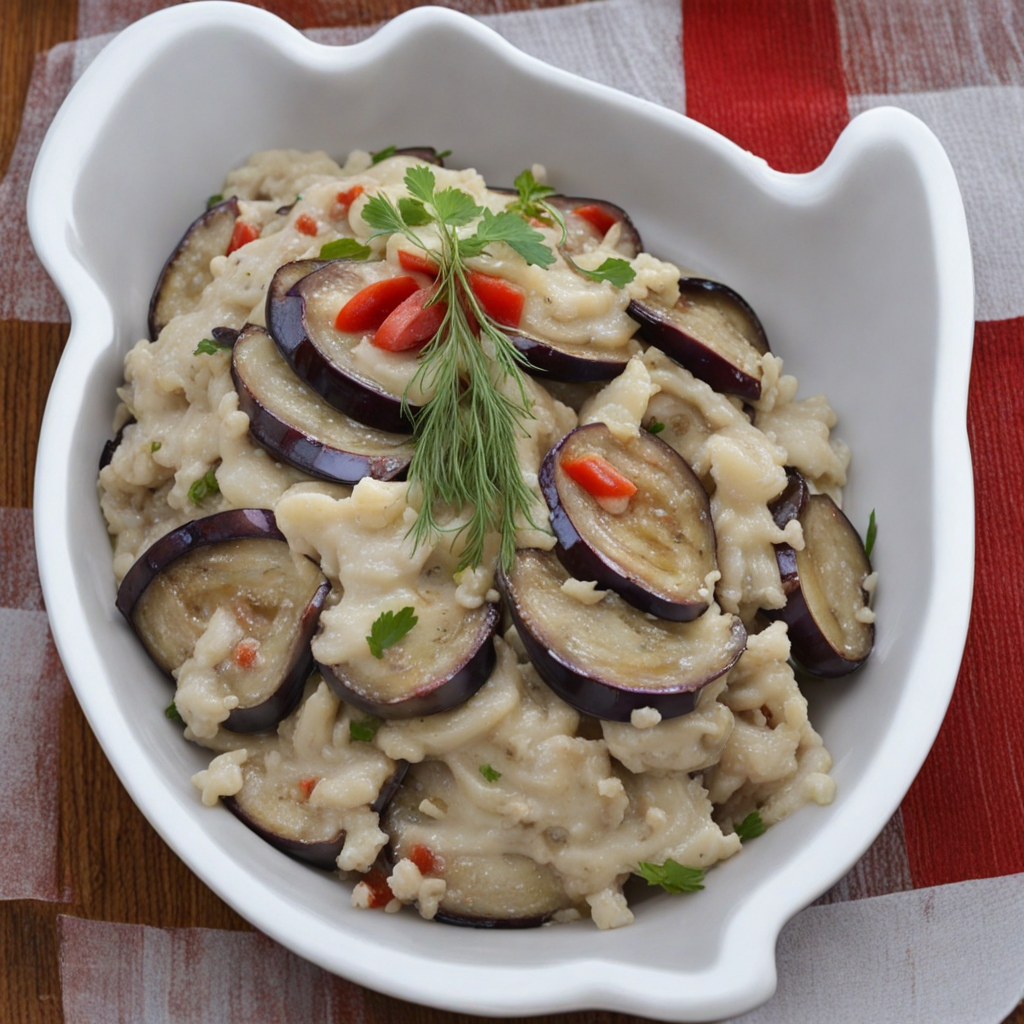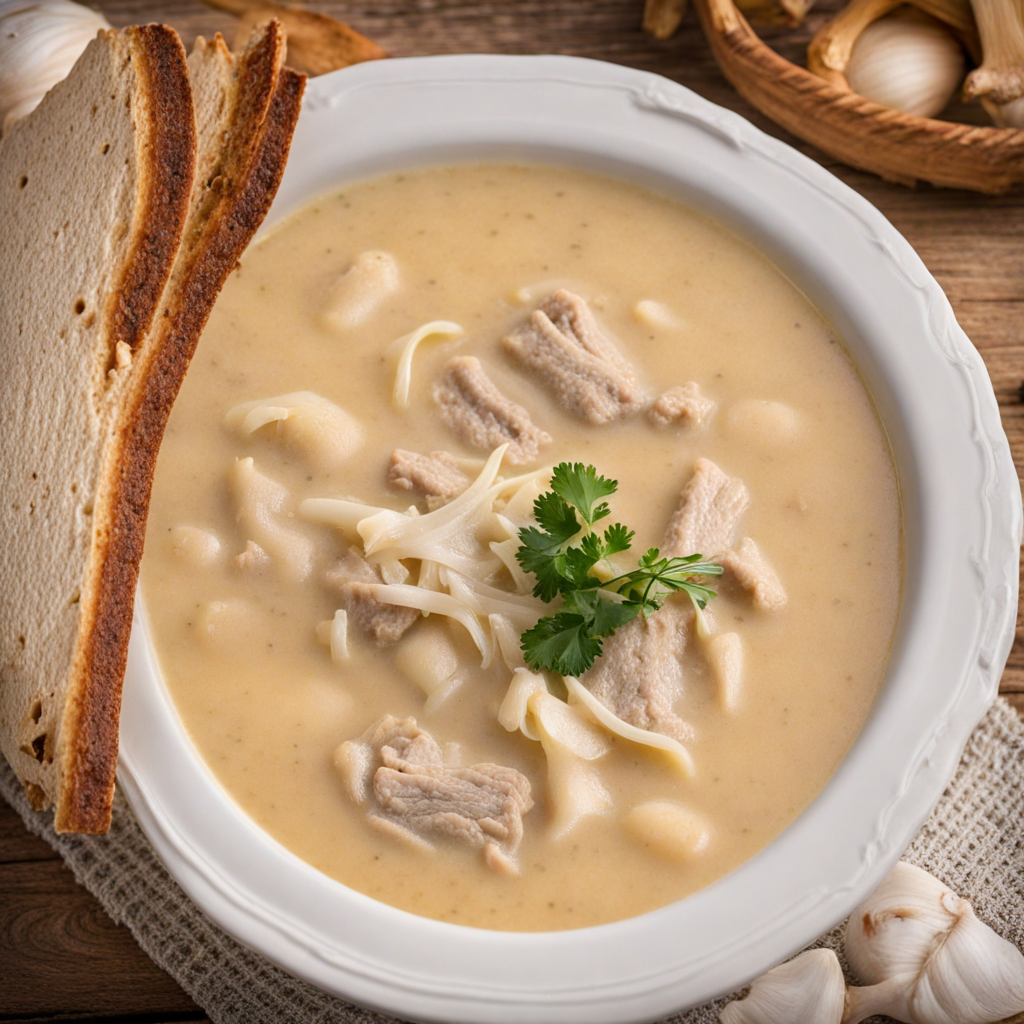Romanian Donuts
Romanian donuts, known locally as "gogoși," are delightful deep-fried treats that capture the essence of Romanian comfort food. These fluffy, golden pastries are made from a sweet dough, typically enriched with eggs and milk, which gives them a soft, pillowy texture. The dough is often flavored with hints of vanilla or citrus zest, adding a subtle aromatic quality that enhances the overall taste. Once fried to perfection, gogoși are traditionally dusted with powdered sugar, making them not only a treat for the palate but also a feast for the eyes. What sets Romanian donuts apart is their versatility; they can be filled with a variety of delicious fillings. Classic options include sweet jams, creamy custards, or even a rich chocolate ganache, offering a burst of flavor with each bite. Some variations are also topped with a chocolate glaze or sprinkled with cinnamon, appealing to different taste preferences. The combination of the airy pastry with the rich filling creates a delightful contrast, making gogoși a beloved snack or dessert throughout Romania. These donuts are deeply ingrained in Romanian culture and are often enjoyed at family gatherings, holidays, and street fairs. The experience of biting into a warm gogoși, with its crisp outer layer giving way to a soft, flavorful center, is truly a sensory delight. Whether enjoyed with a cup of coffee in the morning or as a sweet indulgence any time of day, Romanian donuts offer a taste of tradition and a unique glimpse into the culinary heart of Romania.
How It Became This Dish
The History of Gogoși: Romania’s Beloved Sweet Treat #### Origins Gogoși, the delightful Romanian doughnuts, have a rich and varied history that mirrors the cultural evolution of Romania itself. The term "gogoși" is derived from the Romanian word "gogoașă," which translates to "doughnut" in English. The origins of gogoși can be traced back to the influence of various cultures that have intersected in the region, particularly during the Ottoman Empire's reign in Eastern Europe and the subsequent Austro-Hungarian influence. The earliest forms of gogoși likely emerged from simpler fried dough recipes that were common in various cultures, adapted over time to include local ingredients and flavors. The Ottoman Turks brought their own versions of fried dough, such as "lokma," which inspired many Eastern European countries, including Romania. As Romania developed its distinct culinary identity, gogoși became a staple that showcased local ingredients like flour, eggs, and sugar, often flavored with vanilla or lemon zest. #### Cultural Significance Gogoși are not merely a sweet indulgence; they hold a special place in Romanian culture and tradition. Often associated with festivities, they are a popular treat during holidays and celebrations. In Romanian households, the preparation of gogoși can be a communal activity, bringing families together, especially during the winter holidays like Christmas and New Year’s. Moreover, gogoși reflect the broader Romanian ethos of hospitality. Offering a fresh batch to guests is a gesture of warmth and generosity, symbolizing the importance of community and togetherness. They are often enjoyed with a cup of coffee or tea, making them a perfect accompaniment for social gatherings. In rural areas, gogoși were traditionally made during harvest time, symbolizing abundance and the fruits of labor. They were often sold at local fairs and markets, becoming a source of income for families and a cherished part of local culinary culture. #### Development Over Time As Romania transitioned through various political and social changes, so too did gogoși. In the early 20th century, as urbanization increased, the availability of gogoși expanded beyond rural areas into cities. Street vendors began to sell freshly made gogoși, often filled with jam or cream, making them accessible to a broader audience. This commercialization led to the creation of iconic recipes that showcased regional flavors, with different towns boasting their unique takes on the dish. Following World War II, Romania faced significant economic challenges under Communist rule, which affected food production and availability. People became resourceful in their cooking, using whatever ingredients they could find. Gogoși were no exception; they were made with basic pantry staples and adapted to fit the constraints of the time. Despite these difficulties, gogoși remained a beloved comfort food, often associated with nostalgia for better times. As the Iron Curtain fell in the late 20th century and Romania transitioned to a market economy, gogoși experienced a renaissance. The influx of Western influences and the revival of traditional Romanian cuisine led to a renewed interest in gogoși. Bakeries and pastry shops began to experiment with new flavors and fillings, introducing variations such as chocolate, fruit, and even savory versions filled with cheese or other ingredients. Today, gogoși can be found in numerous forms, from traditional fried varieties to modern baked versions. They are often topped with powdered sugar, glazed, or filled, reflecting a blend of traditional and contemporary baking techniques. The rise of social media has also played a role in the popularity of gogoși, with food bloggers and influencers showcasing visually stunning interpretations of this classic treat, further embedding it in the modern Romanian culinary landscape. #### Modern Gogoși: A Culinary Exploration In contemporary Romania, gogoși continue to evolve while maintaining their traditional roots. Bakeries across the country offer an array of flavors and styles, from the classic powdered sugar-dusted gogoși to innovative creations like Nutella-filled, matcha-flavored, or even vegan options. The versatility of gogoși allows for endless culinary creativity, making them a favorite among both young and old. Festivals and events dedicated to traditional Romanian foods often feature gogoși as a highlight, celebrating their place in the national culinary heritage. Street food markets and fairs frequently showcase gogoși, served hot and fresh, drawing crowds eager to indulge in this beloved sweet. Moreover, gogoși have transcended regional boundaries, becoming a symbol of Romanian culture that resonates with Romanians abroad. Many expatriates have started small businesses focusing on gogoși, bringing a taste of home to their new communities and introducing these delightful treats to a global audience. #### Conclusion Gogoși represents more than just a sweet treat; they encapsulate the essence of Romanian culture, history, and community. From their humble beginnings influenced by various cultures to their modern adaptations, gogoși have stood the test of time. They symbolize the resilience and creativity of the Romanian people, reflecting their culinary heritage while embracing innovation and change. As gogoși continue to be enjoyed in homes, bakeries, and street stalls across Romania and beyond, they remain a testament to the power of food in bringing people together and preserving cultural identity. Whether enjoyed during a festive celebration or as a simple daily indulgence, gogoși are a delicious reminder of the rich tapestry of Romanian history, a sweet connection to the past, and a beloved staple of the present.
You may like
Discover local flavors from Romania







